Collar Insignia - Enlisted Men |
| The standard "collar tab" was called a
Kragenpatte in German. The term "patte" could refer to
the entire insignia, or to just the backing. 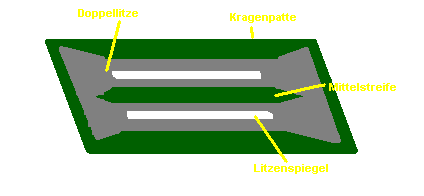 |
Doppellitze - (double
braid) mounted
on
Kragenpatte (Collar
patch)
The coloured stripes
consisted of
Mittelstreife (Middle
stripe)
and
Litzenspiegel (Braid mirrors) |
German collar insignia during the Second World war could
trace its ancestry to the Prussian military of the 17th century. During that period,
every Prussian regiment was identified by the colour of its facings (ie the lining of its
jackets, which were exposed at the collar, cuffs and tails by turning back the material
and buttoning it in place) as well as the lace sewn around the buttonholes.
| FIRST WORLD WAR By 1914, the collar patch became a stylized version of previous
incarnations. The backing patch was the modern version of the older facings, with
braid used to represent the shape of the buttonhole, with the middle stripe representing
the buttonhole itself.
Collar litzen was a relative rarity on First World War
uniforms. At right, a Leutnant of a cavalry unit shows one example of collar
patches, note the size.
According to Joerg M. Horman, in Uniforms of the Infantry
1919 to the
Present;
The collar patches were introduced for all ranks of the army on 6 March 1919,
before this "Guard patches had been reserved only for the guard units in the
imperial army and regarded as a special decoration." pp.9 |
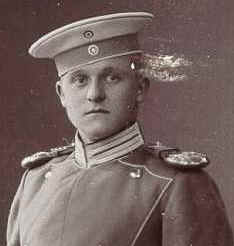
|
REICHSHEER
While these collar patches had not been universal in the
German armies that fought in the Great War, it was adopted in the 1920s universally by the
Reichsheer, with two versions - one for dress, and the other for field use. The
collar patches were decidedly smaller, and were issued in pairs, conforming to the shape
of the collar.

The Reichsheer introduced the concept of branch colours, and
the collar insignia were a useful way to display this distinction (during World War One,
the different colours on shoulder straps and collar patches were usually a representation
of the Corps a soldier belonged to rather than the branch of service he belonged to).
FIELD
DRESS
 |
Doppellitze - light
grey artificial silk
Kragenpatte- field grey cloth to match the uniform collar
Mittelstreife - waffenfarbe
Litzenspiegel - waffenfarbe |
FULL
DRESS
 |
Doppellitze - silver
Kragenpatte - uniform cloth in the soldier's waffenfarbe
Mittelstreife - waffenfarbe
Litzenspiegel - waffenfarbe |
WEHRMACHT - Prewar
In 1935, minor changes to this insignia included a change
from silver to aluminum. Aluminum was less expensive, brighter, and did not have the
tendency to tarnish that silver did.
Also at this time, as the Reichsheer transitioned to become
the Wehrmacht, collars on uniform jackets and blouses were changed to dark green.
FIELD
DRESS
 |
Doppellitze - light grey
artificial silk
Kragenpatte - dark green cloth to match the new collars
Mittelstreife - dark green to match the new collars
Litzenspiegel - waffenfarbe |
FULL
DRESS
 |
Doppellitze - aluminum
Kragenpatte - as above
Mittelstreife - as above
Litzenspiegel - as above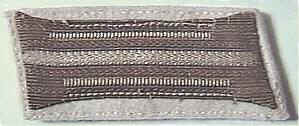
|
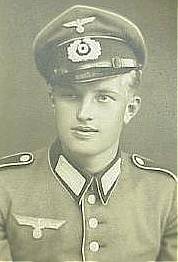 |
|
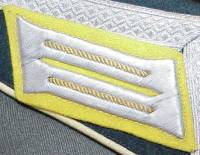
|
Full dress style collar
patches; the lemon yellow waffenfarbe is used on the backing as well as the middle stripe
and litzenspiegel. This example of the full dress collar patch comes from a
Waffenrock dress tunic. |
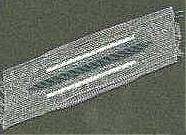
|
The BEVO quality
collar litzen were produced in a shape as seen at left; they were difficult to sew
directly to a uniform, and the nice shape seen above on the machine embroidered
patches was hard to duplicate when sewing by hand. |
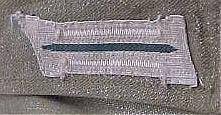 |
|

Above, early style construction, showing
waffenfarbe stripes and dark green backing.
At right, universal
collar patches of either universal pattern, or with dark waffenfarbe matching the dark
shoulder strap piping. Note how far forward the patches are located; generally
speaking, they were located about 1/2 inch from the front of the collar but were also seen
sewn right at the leading edge. |
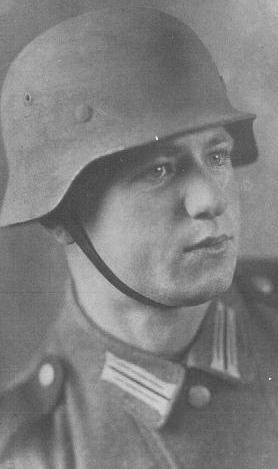 |
 |
In 1938, as the Wehrmacht continued
to expand it was found to be inconvenient for transferring soldiers (who were issued four
field blouses) to require four new sets of collar tabs. According to LTC LH Brown,
in an article in "Kettenhunde" (Vol IV No 4), old tabs were often thrown away,
and the Army bore the expense not only of replacing the tabs, but of having a unit tailor
sew them on for the newly transferred soldier. For this reason, a general purpose
collar tab was adopted. This universal pattern had the waffenfarbe stripes replaced
with a dark green stripe matching the middle stripe and backing. This meant also that collar patches could be mounted on the uniform in
the factory, rather than by unit tailors, since all soldiers would now have the same type
of tabs. Since the backing was the same colour as the collar, the tabs were
sometimes stitched directly to the collar without it. |
 |
|

Three different types of collar patches as worn on the field
blouse; men at left and right have the dark green universal pattern unbacked; man second
from left has field grey, and man second from right appears to have white waffenfarbe
litzen, and also the dark green backing.
WEHRMACHT - Wartime changes
Like other items of dress used by the Wehrmacht, prewar
insignia was quickly supplanted during hostilities by replacement items, usually of lesser
quality. Bearing in mind that private purchase items were permitted to be worn on
walking out dress (and there were a wide variety of these, in different materials and
qualities, including full dress style collar patches that could be worn on the field
blouse for walking out), and older patches permitted even on the field dress, there were
further changes to the collar patches.
It must be stressed that there was not, however, an
"approved pattern." The Wehrmacht permitted whatever type of collar patch
was available to be worn on uniforms. When the new collar patches were introduced,
units were not ordered to remove older patches and replace with new, rather, older patches
were worn alongside newer ones until worn out. Older stocks were used up, and German
soldiers tended to hang on to original items as long as they could; earlier pattern collar
patches were not only sharper looking, but could be a symbol of status as well.
 |
When the collar of
the uniform was changed back to field grey in 1940, the collar patches were changed as
well, to incorporate "field grey" middle stripes and litzenspiegel. In many
cases the field grey was actually a pinkish hue. He also speculates that were there
probably many of the dark green kragenpatten still on hand, and since the litzen were
difficult to sew on to uniforms without the backing, some continued to be sewn to the dark
green backings before being added to uniform collars. Field grey backings were never
introduced, and eventually all of these field grey collar patches came to be sewn directly
to the collar without backings.
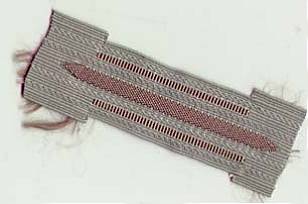
|
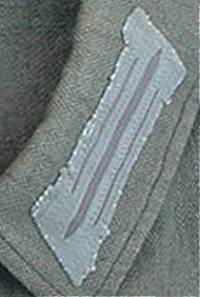
|
 |
|

|
One other wartime change was the universal
pattern tropical collar patch, with tan stripes on a light blue backing. |
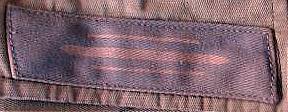
|
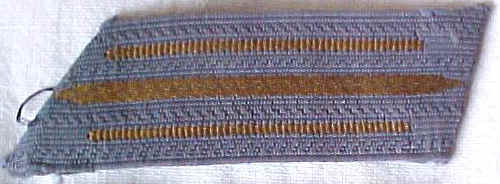 |
|













